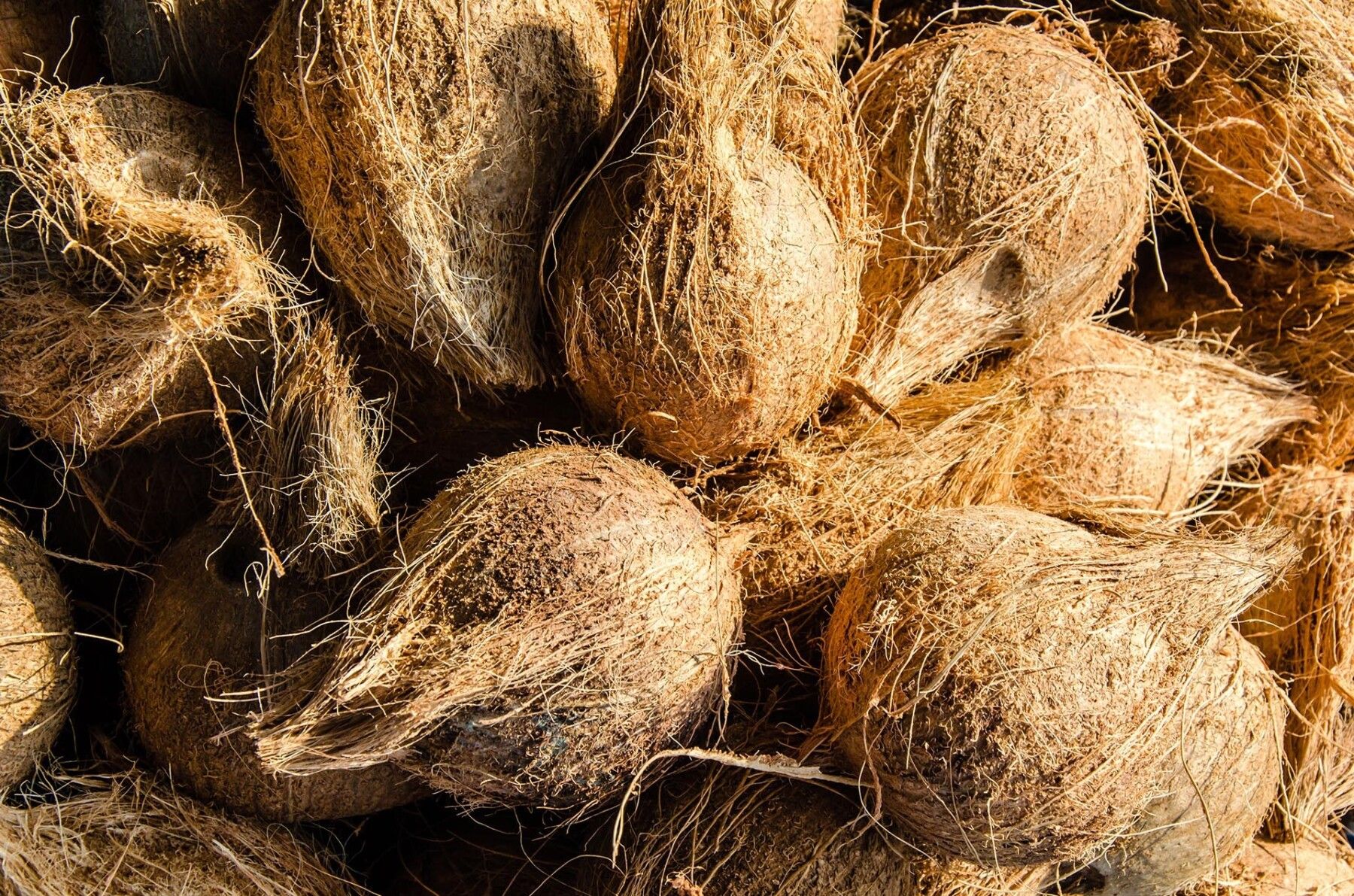
A truly natural product that has associations with paradise. The coconut fibres, sometimes known as coir, are produced from the coconut’s shell.
The fibres of the outer shell (mesocarp) of a coconut are called coconut fibres or coir.
Coconut fibres are classified as hard fibres. The usable fibres of the coconut lie between the outer fibre cover and the stone layer that encloses the flesh of the fruit (copra) and the juice. Approximately 13,000 coconuts are needed for one tonne of coconut fibre.
The 15 - 30 cm long fibres are hollow, elastic and very woody. They are resistant to moisture and decay, and are rightly regarded as hard-wearing, abrasion-resistant and rot-proof. Coconut fibres are dimensionally stable, insect-proof, and open to diffusion, i.e., they have a moisture-balancing effect, and they are not electrostatically chargeable. The products made from the fibre are durable, easy to care for, sound-absorbing, antibacterial and antistatic.
After decomposition of the pectin (a process involving immersion in water), the fibres are separated from each other by hand or by machine. While still wet, they are sorted according to colour and fineness. This is followed by natural drying in the sun or mechanical drying on a drying line. The fibres are then sorted again to separate the combable fibres from the tangled mass.
Coconut fibres from unripe fruits are suitable for textiles or for use in the home and are processed into cords, ropes, or carpets. Fibres from ripe fruits have a higher wood content and cannot be spun. They are used as filling material for mattresses and upholstery or for thermal insulation. In the building sector, coconut fibres are mainly used as insulation material.
(Source: www.materialarchiv.ch)